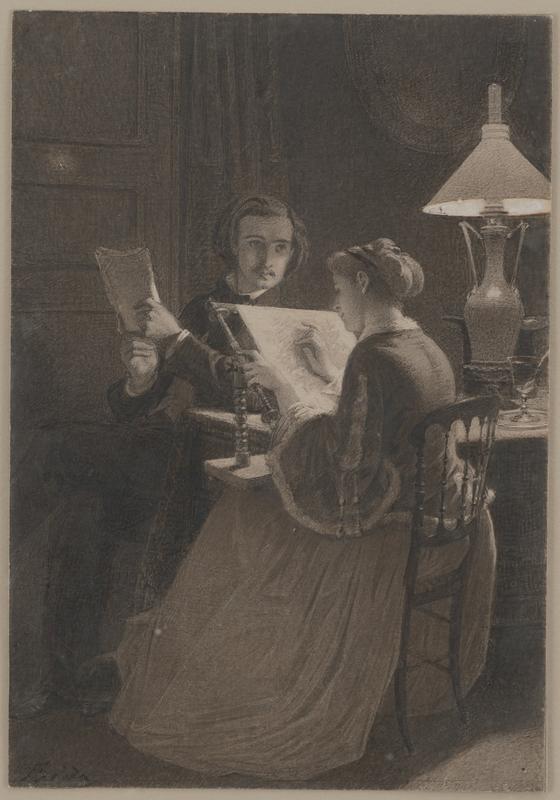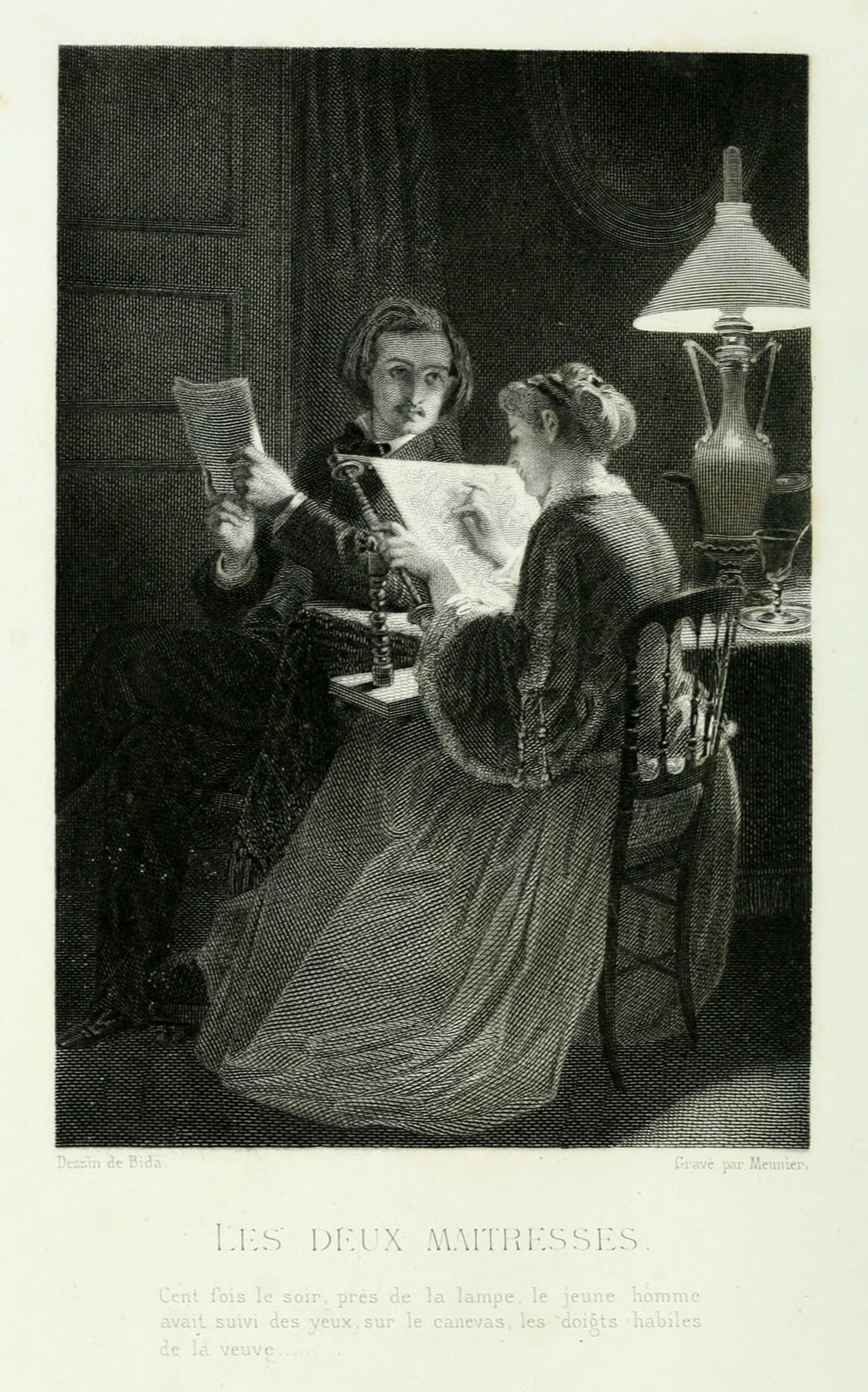
24. Alexandre Bida, Interior Scene with Woman Embroidering and Man Reading
| Artist | Alexandre Bida, French, Toulouse 1823–Bühl, Germany 1895 |
| Title, Date | Interior Scene with Woman Embroidering and Man Reading, c. 1865 |
| Medium | Pencil |
| Dimensions | 9 1/4 × 6 1/2 in. (23.5 × 16.5 cm) |
| Inscriptions + Marks | Lower left: Bida |
| Provenance | [Galerie Les Amis du Dessin, Paris; to Weisberg]; Yvonne and Gabriel Weisberg, Minneapolis |
| Credit Line | Promised gift of Gabriel P. and Yvonne M.L. Weisberg, Minneapolis |

Alexandre Bida drew this lamplit scene of a woman embroidering and a man distracted from his reading to illustrate a romantic novella by Alfred de Musset (1810–1857) entitled The Two Mistresses (Les deux maîtresses). The quasi-autobiographical tale, set in 1825, tells of the feckless Valentin, who has fallen for two women: an impoverished widow and the wife of a wealthy marquis. The present scene describes Valentin’s flashback to one of many quiet evenings spent in the widow’s modest apartment: “Cent fois, le soir, près de la lampe, le jeune homme avait suivi des yeux, sur la canevas, les doigts habiles de la veuve” (A hundred times in the evening, near the lamp, the young man had followed with his eyes on the canvas the skillful fingers of the widow). The memory comes as the two-timing Valentin finally understands the chasm between the carefree marquise and the earnest widow. The marquise impulsively gives Valentin a pillow embellished with needlework that he recognizes as the product of the widow’s labors. When he asks the marquise where she bought the pillow, she lies, saying that she made it. Valentin challenges her, leading her to defile the needlework with her dusty boots. At last, Valentin realizes which is his true love.
This drawing is one of twenty-eight made by Bida to illustrate Musset’s work. After being translated into engravings (fig. 1), they were used to adorn a ten-volume set of the author’s complete writings, published in 1865–66.1 As a painter, Bida was a so-called Orientalist, a specialty influenced by his teacher Eugène Delacroix (1798–1863), a giant of French Romantic art who was deeply interested in the cultures of northern Africa and western Asia. Unlike Delacroix, Bida had a penchant for precise detail, sometimes bordering on the finicky. For this reason, he is better remembered as an illustrator than as a painter. His work appeared at the Salon from 1847 to 1894. He won a first-class medal in 1855 and became a knight of the Legion of Honor that same year.
TER
Notes
Alfred de Musset, Works of Alfred de Musset (Paris: Charpentier, 1865–66). The Two Mistresses appears in vol. 6. This illustration precedes p. 63. The description on which the illustration is based is on p. 124. For an English translation, see Alfred de Musset, The Two Mistresses; Emmeline; The Son of Titian; Frédéric and Bernerette; Pierre and Camille, trans. Gertrude Christian Fosdick (Philadelphia: George Barrie & Son, 1900), pp. 5–91; the text describing the scene is on p. 72. ↩︎